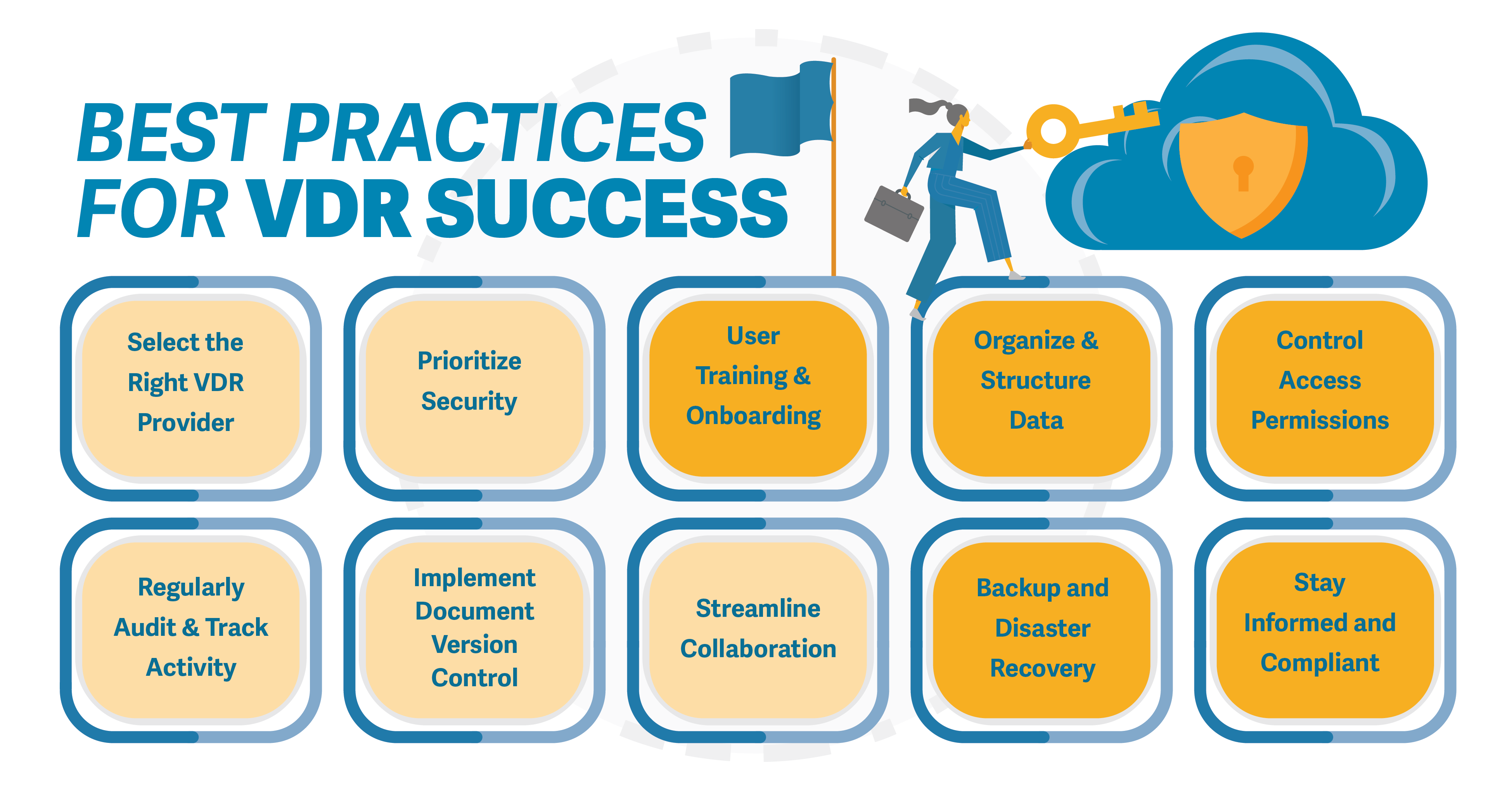
In today's digital age, the need for secure and efficient data management has never been more critical. Businesses regularly deal with vast amounts of sensitive information, whether it's during mergers and acquisitions, due diligence processes, or simply everyday operations. Virtual data rooms (VDRs) have emerged as a valuable tool for securely storing, sharing, and managing sensitive documents and data in a digital environment.
To ensure success in using virtual data rooms, it's essential to follow best practices that optimize security, collaboration, and efficiency. In this article, we'll explore some of the top best practices for virtual data room success.
Select the Right VDR Provider
The foundation of a successful virtual data room experience begins with choosing the right VDR provider. Not all providers are created equal, so it's crucial to assess your organization's specific needs and budget. Look for providers with a solid track record of security, reliability, and user-friendly interfaces. Customer reviews, references, and a careful evaluation of features and pricing should guide your decision.
Prioritize Security
Security should be the top concern when using a virtual data room. Your VDR should provide robust encryption, secure user authentication, access controls, and audit trails.

Additionally, choose a provider that complies with industry-specific regulations and certifications, such as ISO 27001 or SOC 2, to ensure the highest level of data protection.
User Training and Onboarding
Invest time in training and onboarding your team to use the virtual data room effectively. A well-trained workforce is less likely to make security mistakes, such as unintentionally sharing confidential information or falling victim to phishing scams. Make sure all users understand the VDR's features and best practices for data management.
Organize and Structure Data
Effective organization of data within the VDR is critical for streamlining workflows and ensuring quick access to relevant information. Implement a clear and logical folder structure, use descriptive file names, and apply consistent tagging and metadata to documents. This organization will save time and reduce the risk of data getting lost or misplaced.
Control Access Permissions
Limit access to sensitive information to only those who need it. Virtual data rooms allow you to assign granular permissions to users, such as view-only, download, or editing rights. Regularly review and update access permissions based on project requirements and personnel changes to maintain data security.
Regularly Audit and Track Activity
Virtual data rooms should offer robust auditing and tracking features. Regularly monitor user activity within the VDR, including document views, downloads, and uploads. Audit logs provide transparency and help detect any unauthorized or suspicious activities promptly.
Implement Document Version Control
Version control is crucial to prevent confusion and ensure everyone is working with the latest information. Make use of features that allow you to track document changes, and clearly label different versions to avoid errors or outdated information.
Streamline Collaboration
VDRs are not just for storing data; they also facilitate collaboration. Use tools within the VDR to enable discussions, annotations, and real-time collaboration. This reduces the need for external communication channels and enhances productivity.
Backup and Disaster Recovery
Data loss can be catastrophic. Ensure your VDR provider offers regular backups and robust disaster recovery procedures. This ensures that even in the worst-case scenario, your critical data can be restored.

Stay Informed and Compliant
Laws and regulations regarding data management and privacy are continually evolving. Stay informed about relevant legal requirements and industry standards, and ensure your VDR remains compliant. Regularly update your VDR's security protocols and practices to align with the latest security threats and best practices.
In conclusion, virtual data rooms are invaluable tools for securely managing and sharing sensitive information. By following these best practices, organizations can maximize the benefits of VDRs while ensuring data security and compliance. Remember that the key to virtual data room success lies not only in the technology but also in the policies, procedures, and user awareness that surround it.
ShareVault has been providing organizations of all types and sizes with secure document sharing solutions for over 15 years.
